Text
LGBTQIA+/MOGAI Terminology
This is a list of terminology that: is for the community, used by the community, is related to the community in general, describes the opposite of what LGBTQIA+/MOGAI is, is to be used with discretion, or is to be avoided altogether. As this list is updated over time, hyperlinks will be added for more specific terminology lists.
Ace-Spec: the asexual spectrum, also known as the ace spectrum, are any orientations where sexual attraction is absent, either entirely or partially. People who experience occasional attraction, attraction that is felt/disappears only after forming a strong bond, no attraction but wish to partake in situations where attraction would typically take place, a fluctuating attraction, etc. are all part of this spectrum. Some ace-spec people simply refer to themselves as ace.
AFAB: assigned female at birth, also known as DFAB (designated female at birth) or FAAB (female assigned at birth).
AMAB: assigned male at birth, also known as DMAB (designated male at birth) or MAAB (male assigned at birth).
Aphobia: also known as allosexism, is prejudice towards a-spec people.
Aro-Spec: aromantic spectrum, also known as the aro spectrum, are any orientations where romantic attraction is absent, either entirely or partially. People who experience occasional attraction, attraction that is felt/disappears only after forming a strong bond, no attraction but wish to partake in situations where attraction would typically take place, a fluctuating attraction, etc. are all part of this spectrum. Some aro-spec people simply refer to themselves as aro.
A-Spec: ace-spec and/or aro-spec. Some a-spec people simply refer to themselves as aroace if they’re both ace-spec and aro-spec.
Binarism: a term used to describe the way white colonialism forced the gender binary onto BIPOC. This is a term specifically created by BIPOC, for BIPOC, and it’s not to be used by white people to refer to prejudice against nonbinary people and/or genders; binarism isn’t a synonym for nonbinaryphobia/enbyphobia.
CAFAB: coercively assigned female at birth, this is a term is used to describe intersex people that are forcibly AFAB.
CAMAB: coercively assigned male at birth, this is a term is used to describe intersex people that are forcibly AMAB.
Cisgender: when someone’s gender matches the sex they were assigned at birth. The two cisgender identities are cisgender male (someone who was assigned male at birth and identifies themselves as male) and cisgender female (someone who was assigned female at birth and identities themselves as female). Intersex people can label themselves cis, if they’re comfortable labeling themselves as such, though the word ipsogender was coined for this purpose.
COGAP: centered orientations, gender alignments, & perisex; an umbrella term used to describe people who are heterosexual, heteroromantic, cisgender, and perisex, all at the same time.
Enby: a phonetic pronunciation of NB (which is an abbreviation of nonbinary), a term used in place of boy/girl to describe nonbinary people. Due to the connotations of it being a replacement to boy/girl some nonbinary people find the word enby to be infantilizing. To some the word is just audibly/visually displeasing. However, it’s inappropriate to use NB, as it’s already used to mean non-black (NBPOC) by the BIPOC community, so please consider using these alternatives: nby, nbi, nbin, nonbin, enboy/boyby (nonbinary boy), engirl/girlby (nonbinary girl), manby (nonbinary man), womanby (nonbinary woman), etc.
FTM: female to male. While some trans men still use this terminology to describe themselves, a lot of trans men find this term problematic, because it implies that they “were” female at any point, and for this reason, would rather be addressed as [trans] men.
Gai: when a relationship and/or attraction to a person or persons “feels gay”. This term is only to be used by nonbinary/genderqueer people or those who are attracted to them and/or in a relationship with them.
Gender Binary: the classification of male and female, as a sex or gender, and the cisnormative expectancy to fulfill specific gender roles, though the binary is not exclusive to only cisgender people. Someone who’s binary is one hundred percent male one hundred percent of the time or one hundred percent female one hundred percent of the time, hence why someone who isn’t strictly male or female would be nonbinary, even if they partially identify as male or female. As long as a person is strictly male or female, whether cis or trans, they’re binary.
Gender Expression: not to be confused with gender identity, this is a term is used to describe someone’s appearance (the words feminine, masculine, or androgynous are used to describe someone’s gender expression). A person’s gender expression may root from how they identify their gender, like a trans man dressing in a masculine manner, or someone’s gender expression may “not match”, like a nonbinary person dressing in a feminine manner. It’s best not to assume someone’s gender based on gender expression.
Genderfluid: a nonbinary/genderqueer identity when someone’s gender changes. The amount of time between the switch of genders or the amount of genders someone switches between depends from person to person.
Gender Identity: how someone labels their personal experience with gender. It’s important to note that this shouldn’t be used to describe someone else’s gender, as it sounds belittling (for example, saying someone identifies as a woman, instead of simply saying they’re a woman, sounds like you’re not acknowledging that they are their gender) and generally should be used with discretion. This term, for all intents and purposes, is very literal. How one labels themselves is their identity and isn’t to say one’s gender isn’t the one they say it is.
Genderqueer: not being male or female, either partially or entirely. This term can be used as a label as is or as an umbrella term. Some people aren’t comfortable with reclaiming the word queer, so the term nonbinary was coined with these people in mind, though some use nonbinary and genderqueer as synonyms.
GNC: gender non-conforming, when someone doesn’t follow the stereotypical gender roles associated with the gender binary and/or their sex assigned at birth. This term is often used incorrectly as an alternative for genderqueer and nonbinary, but GNC people can be any gender alignment, including cisgender.
Heteroromantic: also known as straight (unless the individual’s sexual orientation isn’t also het) this term describes the romantic attraction to the opposite gender. This term has binary connotations, but nonbinary folks may use it to describe their attraction to a ”different gender” rather than the “opposite gender” if they wish, though the term “strayt” was coined for for this purpose.
Heterosexual: also known as straight (unless the individual’s romantic orientation isn’t also het), this term describes the sexual attraction to the opposite gender. This term has binary connotations, but nonbinary folks may use it to describe their attraction to a ”different gender” rather than the “opposite gender” if they wish, though the term “strayt” was coined for for this purpose.
Homororomantic: also known as gay or lesbian, this term describes the romantic attraction to the same gender. This term has binary connotations, but nonbinary folks may use it to describe their attraction to a ”similar gender” rather than the “same gender” if they wish, though the term “gai” was coined for for this purpose.
Homosexual: also known as gay or lesbian, this term describes the sexual attraction to the same gender. This term has binary connotations, but nonbinary folks may use it to describe their attraction to a ”similar gender” rather than the “same gender” if they wish, though the term “gai” was coined for for this purpose.
Intersex: a term used to describe someone who was born with a mix of male and female sex characteristics (primary and/or secondary sex characteristics). Many intersex infants and children are subjected to numerous genital surgeries and hormone treatments that are often unnecessary in order to conform their bodies to the binary standard of either male or female. Intersex people are mistakenly acknowledged as hermaphrodites, which is considered an outdated and offensive term, though some intersex folk have reclaimed it.
Ipsogender: intersex people who identify as cisgender. Though intersex people could simply use the word cisgender if they wish, it may not feel appropriate to an intersex person who’s been coercively assigned a sex.
LGBTQIA+: lesbian, gay, bisexual, transgender, queer/questioning, intersex, & asexual, with the + covering any identities that aren’t cisgender, heteroromantic, and/or heterosexual. It can be argued that the letters represent any identities with the same beginning letter, but this covers the original intended meaning.
MGA: marginalized gender alignment, this is a term used to describe those who aren’t cisgender. The reason it says “marginalized gender alignment” and not just “marginalized gender” is due to the fact that this would inherently include cisgender women, regardless of whether or not they’re LGBTQIA+/MOGAI. The word alignment refers to the way you’re your gender and not necessarily how you identify on more specific terms. For example, a nonbinary person, no matter where they actually “align” on the gender spectrum is MGA, even if they aren’t comfortable labeling themselves as trans, because they’re not cis.
MGSROI: marginalized genders, sexual & romantic orientations, & intersex. This was created as a means to have a community similar but separate to the LGBTQIA+/MOGAI community. Though they are technically the same, MGSROI was made for those who felt alienated by the LGBTQIA+/MOGAI community.
MO: marginalized orientation, this is a term used to describe those who aren’t heteroromantic and/or heterosexual.
MOGAI: marginalized orientations, gender alignments, & intersex, also known as IMOGA (intersex, marginalized orientations, & gender alignments), or MOGII (marginalized orientations, gender identities, & intersex), is an umbrella term that was made as a more inclusive alternative to LGBTQIA+. In recent years, there’s been concerns that if we were to include everyone in the LGBTQIA+ acronym, we’d have a lengthy community name, and the + comes off dismissive, as if to lump everyone else together as an afterthought.
Monosexism: prejudice towards m-spec people.
M-Spec: the multiromantic and/or multisexual spectrum, also known as the multi spectrum, are any orientations where romantic and/or sexual attraction is felt toward multiple genders (2 or more). Some multi-spec people simply refer to themselves as multiromantic and/or multisexual.
MTF: male to female. While some trans women still use this terminology to describe themselves, a lot of trans women find this term problematic, because it implies that they “were” male at any point, and for this reason, would rather be addressed as [trans] women.
Nonbinary: not being male or female, either partially or entirely. This term can be used as a label as is or as an umbrella term. This was originally known as genderqueer, but some people aren’t comfortable with reclaiming the word queer, so the term nonbinary was coined with these people in mind. Some people use nonbinary and genderqueer as synonyms.
Nonbinary [Wo]man: someone who isn’t binary but has a strong connection to the male or female gender. Since a nonbinary person can partially identify with being male or female, or consider themselves male aligned or female aligned within the gender spectrum, they may label themselves both nonbinary and male/female to signify the importance of both identities. Alternatively, someone can label themselves a genderqueer man/woman or a genderfluid man/woman.
Nonbinaryphobia/Enbyphobia: also known as exorsexism, is prejudice against nonbinary people and nonbinary genders/gender identities. While transphobia can also describe this, because a nonbinary person’s gender doesn’t match the sex they were assigned at birth, not all nonbinary people are comfortable labeling themselves as trans, therefore transphobia wouldn’t be an accurate or appropriate term for them.
Perisex: also known as dyadic, someone who isn’t intersex.
Queer: someone who isn’t heteroromantic, heterosexual, or cisgender, a term that can be used as a label as is or as an umbrella term. Someone may address themselves as queer either because they choose not to label themselves as a specific orientation and/or gender identity or because they haven’t found a specific term that best describes their orientation and/or gender identity. This word has been notoriously used against the LGBTQIA+/MOGAI community as a slur, so some do still consider this an offensive term, but many have reclaimed it.
REG: reactionary exclusionist gatekeepers, a term used to describe people who exclude people they feel aren’t “(insert identity here) enough” to be part of the LGBTQIA+ community.
Romantic Attraction: an emotional response that causes someone to desire a person or persons romantically.
Romantic Orientation: a descriptor used to label what gender(s) one is attracted to romantically and/or how someone experiences or doesn’t experience romantic attraction.
SAM: split attraction model, the categorization of an individual’s orientations, so one can label both their romantic and sexual orientations. This allows people to not have to use sexuality labels to describe both sexual and romantic attraction.
Sexual Attraction: an emotional response that causes someone to desire a person or persons sexually.
Sexual Orientation: a descriptor used to label what gender(s) one is attracted to sexually and/or how someone experiences or doesn’t experience sexual attraction.
Strayt: when a relationship and/or attraction to a person or persons “feels straight”. This term is only to be used by nonbinary/genderqueer people or those who are attracted to them and/or in a relationship with them.
TERF: trans exclusionary radical feminist, people (let’s not call them feminists) who believe trans women are men trying to invade women’s spaces and that trans men are “gender traitors”. The response to this hate has been the intersectional feminism movement.
Third Gender: a gender not within the gender binary; please note that this isn’t necessarily synonymous with nonbinary/genderqueer, because third gender often refers to culture-specific gender identities.
TMA: transmisogyny affected.
TME: transmisogyny exempt.
Transgender: when someone’s gender doesn’t match the sex they were assigned at birth. The three transgender identities are transgender male (someone who was assigned female at birth and identities themselves as male), transgender female (someone who was assigned male at birth and identities themselves as female), or nonbinary/genderqueer (some nonbinary/genderqueer people don’t use the trans label, but by definition are included if they wish to be, and are also included in the trans flag).
Transmedic: someone who believes being transgender shouldn’t be reliant on a diagnosis and that the trans community should nurture each other during our oppression rather than treat it as a contest of who’s “more trans”.
Transmedicalist: someone who believes being transgender is a diagnosis and you’re not truly trans without it. They also believe that the appropriate way to be trans is to transition because you’re “fixing the illness”.
Transmisogyny: prejudice against transgender women and transfeminine people. This is a specific type of bigotry and it isn’t the same as experiencing both transphobia and misogyny at the same time (so this concept doesn’t apply to a trans man who’s being dealt misogynistic comments while being misgendered, for example).
Transphobia: prejudice against transgender people.
Transsexual: someone who’s underwent surgery to change their sex characteristics in order to match their gender. Though there are some transgender people who use this term, it’s considered by most to be outdated, and insensitive to those who aren’t currently in transition, or can’t transition, or don’t plan to transition, as if to say they aren’t trans enough or aren’t really trans.
Transvestite: an outdated term used to refer to cisgender men who are crossdressers. It’s considered to be an offensive term and is often used as a slur against transgender women to imply they’re just “a man in a dress”.
Truscum: people who don’t believe you’re trans unless you experience dysphoria. They often dismiss the existence of nonbinary people as well.
Tucute: someone who believes one doesn’t need to experience dysphoria in order to be trans.
UAAB: unassigned at birth (this is a rare designation dependent on a physician’s perception of an infant’s genitalia).
please consider buying a kofi for the queer who made this list 🧜♂️
19 notes
·
View notes
Text
LGBTQIA+/MOGAI Terminology
This is a list of terminology that: is for the community, used by the community, is related to the community in general, describes the opposite of what LGBTQIA+/MOGAI is, is to be used with discretion, or avoided altogether. As this list is updated over time, hyperlinks will be added for more specific terminology lists.
Ace-Spec: the asexual spectrum, also known as the ace spectrum, are any orientations where sexual attraction is absent, either entirely or partially. People who experience occasional attraction, attraction that is felt/disappears only after forming a strong bond, no attraction but wish to partake in situations where attraction would typically take place, a fluctuating attraction, etc. are all part of this spectrum. Some ace-spec people simply refer to themselves as ace.
AFAB: assigned female at birth, also known as DFAB (designated female at birth) or FAAB (female assigned at birth).
AMAB: assigned male at birth, also known as DMAB (designated male at birth) or MAAB (male assigned at birth).
Aphobia: also known as allosexism, is prejudice towards a-spec people.
Aro-Spec: aromantic spectrum, also known as the aro spectrum, are any orientations where romantic attraction is absent, either entirely or partially. People who experience occasional attraction, attraction that is felt/disappears only after forming a strong bond, no attraction but wish to partake in situations where attraction would typically take place, a fluctuating attraction, etc. are all part of this spectrum. Some aro-spec people simply refer to themselves as aro.
A-Spec: ace-spec and/or aro-spec. Some a-spec people simply refer to themselves as aroace if they’re both ace-spec and aro-spec.
Binarism: a term used to describe the way white colonialism forced the gender binary onto BIPOC. This is a term specifically created by BIPOC, for BIPOC, and it’s not to be used by white people to refer to prejudice against nonbinary people and/or genders; binarism isn’t a synonym for nonbinaryphobia/enbyphobia.
CAFAB: coercively assigned female at birth, this is a term is used to describe intersex people that are forcibly AFAB.
CAMAB: coercively assigned male at birth, this is a term is used to describe intersex people that are forcibly AMAB.
Cisgender: when someone’s gender matches the sex they were assigned at birth. The two cisgender identities are cisgender male (someone who was assigned male at birth and identifies themselves as male) and cisgender female (someone who was assigned female at birth and identities themselves as female). Intersex people can label themselves cis, if they’re comfortable labeling themselves as such, though the word ipsogender was coined for this purpose.
COGAP: centered orientations, gender alignments, & perisex; an umbrella term used to describe people who are heterosexual, heteroromantic, cisgender, and perisex, all at the same time.
Enby: a phonetic pronunciation of NB (which is an abbreviation of nonbinary), a term used in place of boy/girl to describe nonbinary people. Due to the connotations of it being a replacement to boy/girl some nonbinary people find the word enby to be infantilizing. To some the word is just audibly/visually displeasing. However, it’s inappropriate to use NB, as it’s already used to mean non-black (NBPOC) by the BIPOC community, so please consider using these alternatives: nby, nbi, nbin, nonbin, enboy/boyby (nonbinary boy), engirl/girlby (nonbinary girl), manby (nonbinary man), womanby (nonbinary woman), etc.
FTM: female to male. While some trans men still use this terminology to describe themselves, a lot of trans men find this term problematic, because it implies that they “were” female at any point, and for this reason, would rather be addressed as [trans] men.
Gai: when a relationship and/or attraction to a person or persons “feels gay”. This term is only to be used by nonbinary/genderqueer people or those who are attracted to them and/or in a relationship with them.
Gender Binary: the classification of male and female, as a sex or gender, and the cisnormative expectancy to fulfill specific gender roles, though the binary is not exclusive to only cisgender people. Someone who’s binary is one hundred percent male one hundred percent of the time or one hundred percent female one hundred percent of the time, hence why someone who isn’t strictly male or female would be nonbinary, even if they partially identify as male or female. As long as a person is strictly male or female, whether cis or trans, they’re binary.
Gender Expression: not to be confused with gender identity, this is a term is used to describe someone’s appearance (the words feminine, masculine, or androgynous are used to describe someone’s gender expression). A person’s gender expression may root from how they identify their gender, like a trans man dressing in a masculine manner, or someone’s gender expression may “not match”, like a nonbinary person dressing in a feminine manner. It’s best not to assume someone’s gender based on gender expression.
Genderfluid: a nonbinary/genderqueer identity when someone’s gender changes. The amount of time between the switch of genders or the amount of genders someone switches between depends from person to person.
Gender Identity: how someone labels their personal experience with gender. It’s important to note that this shouldn’t be used to describe someone else’s gender, as it sounds belittling (for example, saying someone identifies as a woman, instead of simply saying they’re a woman, sounds like you’re not acknowledging that they are their gender) and generally should be used with discretion. This term, for all intents and purposes, is very literal. How one labels themselves is their identity and isn’t to say one’s gender isn’t the one they say it is.
Genderqueer: not being male or female, either partially or entirely. This term can be used as a label as is or as an umbrella term. Some people aren’t comfortable with reclaiming the word queer, so the term nonbinary was coined with these people in mind, though some use nonbinary and genderqueer as synonyms.
GNC: gender non-conforming, when someone doesn’t follow the stereotypical gender roles associated with the gender binary and/or their sex assigned at birth. This term is often used incorrectly as an alternative for genderqueer and nonbinary, but GNC people can be any gender alignment, including cisgender.
Heteroromantic: also known as straight (unless the individual’s sexual orientation isn’t also het) this term describes the romantic attraction to the opposite gender. This term has binary connotations, but nonbinary folks may use it to describe their attraction to a ”different gender” rather than the “opposite gender” if they wish, though the term “strayt” was coined for for this purpose.
Heterosexual: also known as straight (unless the individual’s romantic orientation isn’t also het), this term describes the sexual attraction to the opposite gender. This term has binary connotations, but nonbinary folks may use it to describe their attraction to a ”different gender” rather than the “opposite gender” if they wish, though the term “strayt” was coined for for this purpose.
Homororomantic: also known as gay or lesbian, this term describes the romantic attraction to the same gender. This term has binary connotations, but nonbinary folks may use it to describe their attraction to a ”similar gender” rather than the “same gender” if they wish, though the term “gai” was coined for for this purpose.
Homosexual: also known as gay or lesbian, this term describes the sexual attraction to the same gender. This term has binary connotations, but nonbinary folks may use it to describe their attraction to a ”similar gender” rather than the “same gender” if they wish, though the term “gai” was coined for for this purpose.
Intersex: a term used to describe someone who was born with a mix of male and female sex characteristics (primary and/or secondary sex characteristics). Many intersex infants and children are subjected to numerous genital surgeries and hormone treatments that are often unnecessary in order to conform their bodies to the binary standard of either male or female. Intersex people are mistakenly acknowledged as hermaphrodites, which is considered an outdated and offensive term, though some intersex folk have reclaimed it.
Ipsogender: intersex people who identify as cisgender. Though intersex people could simply use the word cisgender if they wish, it may not feel appropriate to an intersex person who’s been coercively assigned a sex.
LGBTQIA+: lesbian, gay, bisexual, transgender, queer/questioning, intersex, & asexual, with the + covering any identities that aren’t cisgender, heteroromantic, and/or heterosexual. It can be argued that the letters represent any identities with the same beginning letter, but this covers the original intended meaning.
MGA: marginalized gender alignment, this is a term used to describe those who aren’t cisgender. The reason it says “marginalized gender alignment” and not just “marginalized gender” is due to the fact that this would inherently include cisgender women, regardless of whether or not they’re LGBTQIA+/MOGAI. The word alignment refers to the way you’re your gender and not necessarily how you identify on more specific terms. For example, a nonbinary person, no matter where they actually “align” on the gender spectrum is MGA, even if they aren’t comfortable labeling themselves as trans, because they’re not cis.
MGSROI: marginalized genders, sexual & romantic orientations, & intersex. This was created as a means to have a community similar but separate to the LGBTQIA+/MOGAI community. Though they are technically the same, MGSROI was made for those who felt alienated by the LGBTQIA+/MOGAI community.
MO: marginalized orientation, this is a term used to describe those who aren’t heteroromantic and/or heterosexual.
MOGAI: marginalized orientations, gender alignments, & intersex, also known as IMOGA (intersex, marginalized orientations, & gender alignments), or MOGII (marginalized orientations, gender identities, & intersex), is an umbrella term that was made as a more inclusive alternative to LGBTQIA+. In recent years, there’s been concerns that if we were to include everyone in the LGBTQIA+ acronym, we’d have a lengthy community name, and the + comes off dismissive, as if to lump everyone else together as an afterthought.
Monosexism: prejudice towards m-spec people.
M-Spec: the multiromantic and/or multisexual spectrum, also known as the multi spectrum, are any orientations where romantic and/or sexual attraction is felt toward multiple genders (2 or more). Some multi-spec people simply refer to themselves as multiromantic and/or multisexual.
MTF: male to female. While some trans women still use this terminology to describe themselves, a lot of trans women find this term problematic, because it implies that they “were” male at any point, and for this reason, would rather be addressed as [trans] women.
Nonbinary: not being male or female, either partially or entirely. This term can be used as a label as is or as an umbrella term. This was originally known as genderqueer, but some people aren’t comfortable with reclaiming the word queer, so the term nonbinary was coined with these people in mind. Some people use nonbinary and genderqueer as synonyms.
Nonbinary [Wo]man: someone who isn’t binary but has a strong connection to the male or female gender. Since a nonbinary person can partially identify with being male or female, or consider themselves male aligned or female aligned within the gender spectrum, they may label themselves both nonbinary and male/female to signify the importance of both identities. Alternatively, someone can label themselves a genderqueer man/woman or a genderfluid man/woman.
Nonbinaryphobia/Enbyphobia: also known as exorsexism, is prejudice against nonbinary people and nonbinary genders/gender identities. While transphobia can also describe this, because a nonbinary person’s gender doesn’t match the sex they were assigned at birth, not all nonbinary people are comfortable labeling themselves as trans, therefore transphobia wouldn’t be an accurate or appropriate term for them.
Perisex: also known as dyadic, someone who isn’t intersex.
Queer: someone who isn’t heteroromantic, heterosexual, or cisgender, a term that can be used as a label as is or as an umbrella term. Someone may address themselves as queer either because they choose not to label themselves as a specific orientation and/or gender identity or because they haven’t found a specific term that best describes their orientation and/or gender identity. This word has been notoriously used against the LGBTQIA+/MOGAI community as a slur, so some do still consider this an offensive term, but many have reclaimed it.
REG: reactionary exclusionist gatekeepers, a term used to describe people who exclude people they feel aren’t “(insert identity here) enough” to be part of the LGBTQIA+ community.
Romantic Attraction: an emotional response that causes someone to desire a person or persons romantically.
Romantic Orientation: a descriptor used to label what gender(s) one is attracted to romantically and/or how someone experiences or doesn’t experience romantic attraction.
SAM: split attraction model, the categorization of an individual’s orientations, so one can label both their romantic and sexual orientations. This allows people to not have to use sexuality labels to describe both sexual and romantic attraction.
Sexual Attraction: an emotional response that causes someone to desire a person or persons sexually.
Sexual Orientation: a descriptor used to label what gender(s) one is attracted to sexually and/or how someone experiences or doesn’t experience sexual attraction.
Strayt: when a relationship and/or attraction to a person or persons “feels straight”. This term is only to be used by nonbinary/genderqueer people or those who are attracted to them and/or in a relationship with them.
TERF: trans exclusionary radical feminist, people (let’s not call them feminists) who believe trans women are men trying to invade women’s spaces and that trans men are “gender traitors”. The response to this hate has been the intersectional feminism movement.
Third Gender: a gender not within the gender binary; please note that this isn’t necessarily synonymous with nonbinary/genderqueer, because third gender often refers to culture-specific gender identities.
TMA: transmisogyny affected.
TME: transmisogyny exempt.
Transgender: when someone’s gender doesn’t match the sex they were assigned at birth. The three transgender identities are transgender male (someone who was assigned female at birth and identities themselves as male), transgender female (someone who was assigned male at birth and identities themselves as female), or nonbinary/genderqueer (some nonbinary/genderqueer people don’t use the trans label, but by definition are included if they wish to be, and are also included in the trans flag).
Transmedic: someone who believes being transgender shouldn’t be reliant on a diagnosis and that the trans community should nurture each other during our oppression rather than treat it as a contest of who’s “more trans”.
Transmedicalist: someone who believes being transgender is a diagnosis and you’re not truly trans without it. They also believe that the appropriate way to be trans is to transition because you’re “fixing the illness”.
Transmisogyny: prejudice against transgender women. This is a specific type of bigotry and it isn’t the same as experiencing both transphobia and misogyny at the same time (so this concept doesn’t apply to a trans man who’s being dealt misogynistic comments while being misgendered, for example).
Transphobia: prejudice against transgender people.
Transsexual: someone who’s underwent surgery to change their sex characteristics in order to match their gender. Though there are some transgender people who use this term, it’s considered by most to be outdated, and insensitive to those who aren’t currently in transition, or can’t transition, or don’t plan to transition, as if to say they aren’t trans enough or aren’t really trans.
Transvestite: an outdated term used to refer to cisgender men who are crossdressers. It’s considered to be an offensive term and is often used as a slur against transgender women to imply they’re just “a man in a dress”.
Truscum: people who don’t believe you’re trans unless you experience dysphoria. They often dismiss the existence of nonbinary people as well.
Tucute: someone who believes one doesn’t need to experience dysphoria in order to be trans.
UAAB: unassigned at birth (this is a rare designation dependent on a physician’s perception of an infant’s genitalia).
please consider buying a kofi for the queer who made this list 🧜♂️
19 notes
·
View notes
Text
It's ironic how cishet people made this "Tumblr stereotype" when they’re LITERALLY the reason for that stereotype. Like, after hearing "oh hahaha, what, are you triggered?! Why don’t you go to your safe space on Tumblr you snowflake" repeatedly, well... then yeah, I’ll go do that actually, you fucking prick.
0 notes
Photo

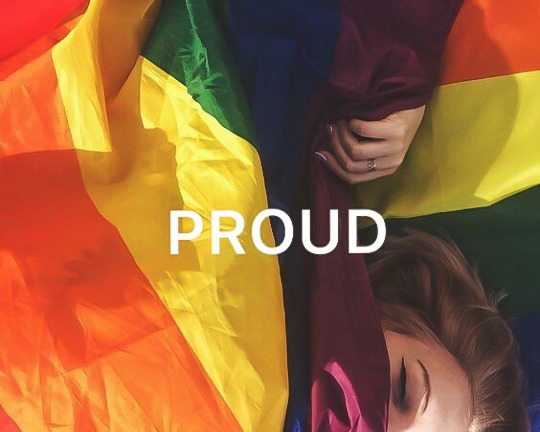

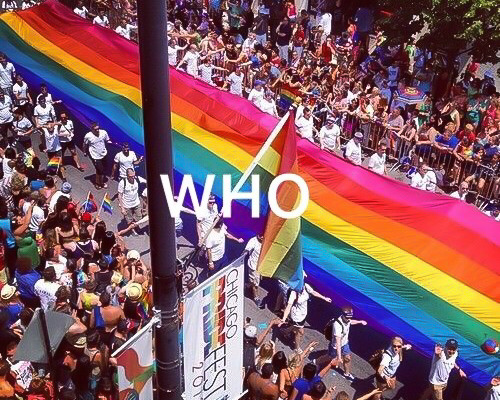


HAPPY PRIDE MONTH!🏳️🌈🏳️🌈🏳️🌈
144K notes
·
View notes
Text
There are WAY more than 2 genders
336 notes
·
View notes
Photo
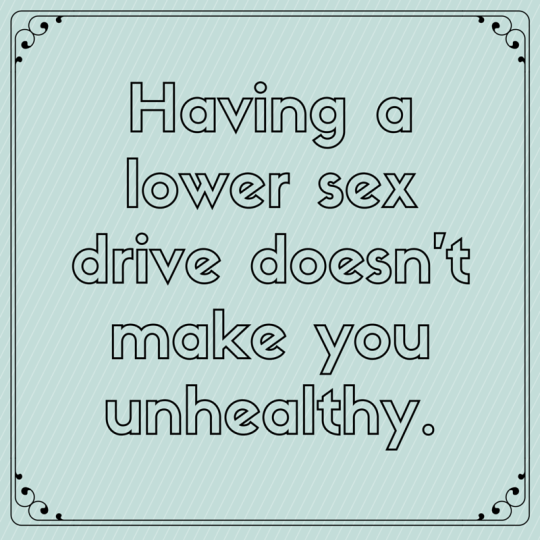

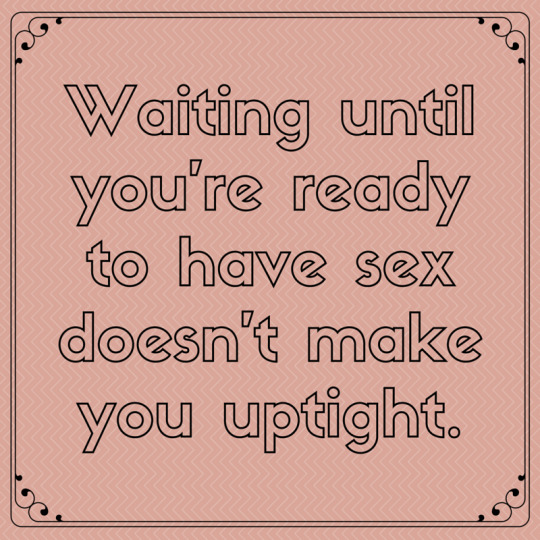
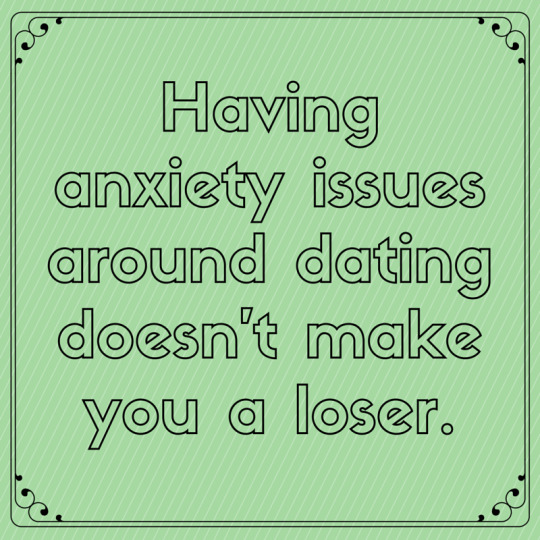
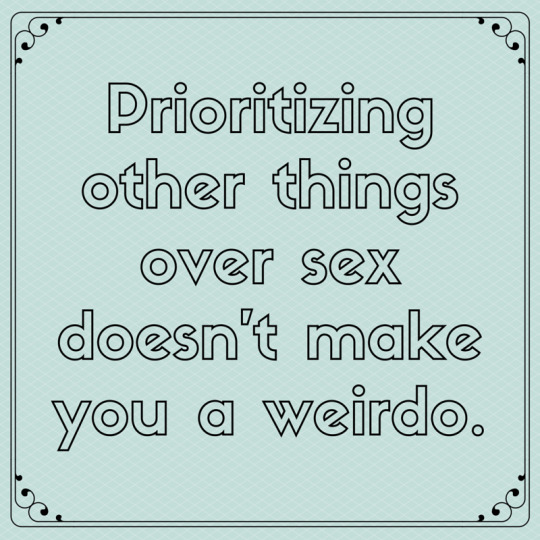


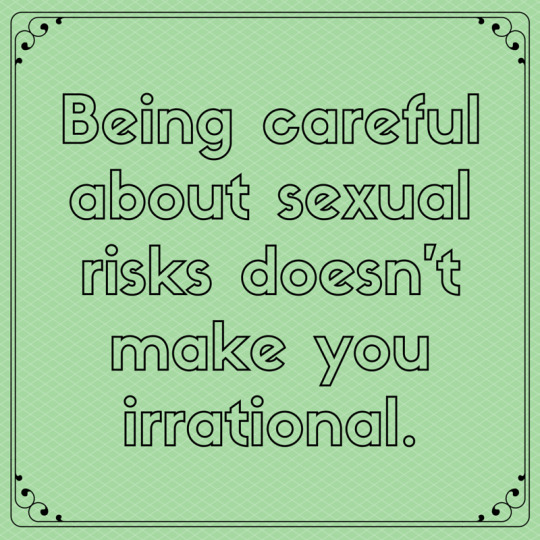

562K notes
·
View notes
Text
I just think it's funny that people say "everyone/everything is gay/trans/etc now" but also simultaneously believe there isn't enough of us to focus on evolving their language. Interesting... 🤔
5 notes
·
View notes
Text
Things that are okay:
Being ace and sex-repulsed
Being ace and loving sex
Things that are not okay:
Expecting every ace to be sex-repulsed
Expecting every ace to love sex
500 notes
·
View notes
Photo








Watch: Nike features badass trans duathlete Chris Mosier in its new ad
224K notes
·
View notes
Text
What is ok: “I don’t really like to label myself, I’m just me!”
What isn’t ok: “Why do you need a label? Just be yourself!”
4 notes
·
View notes



